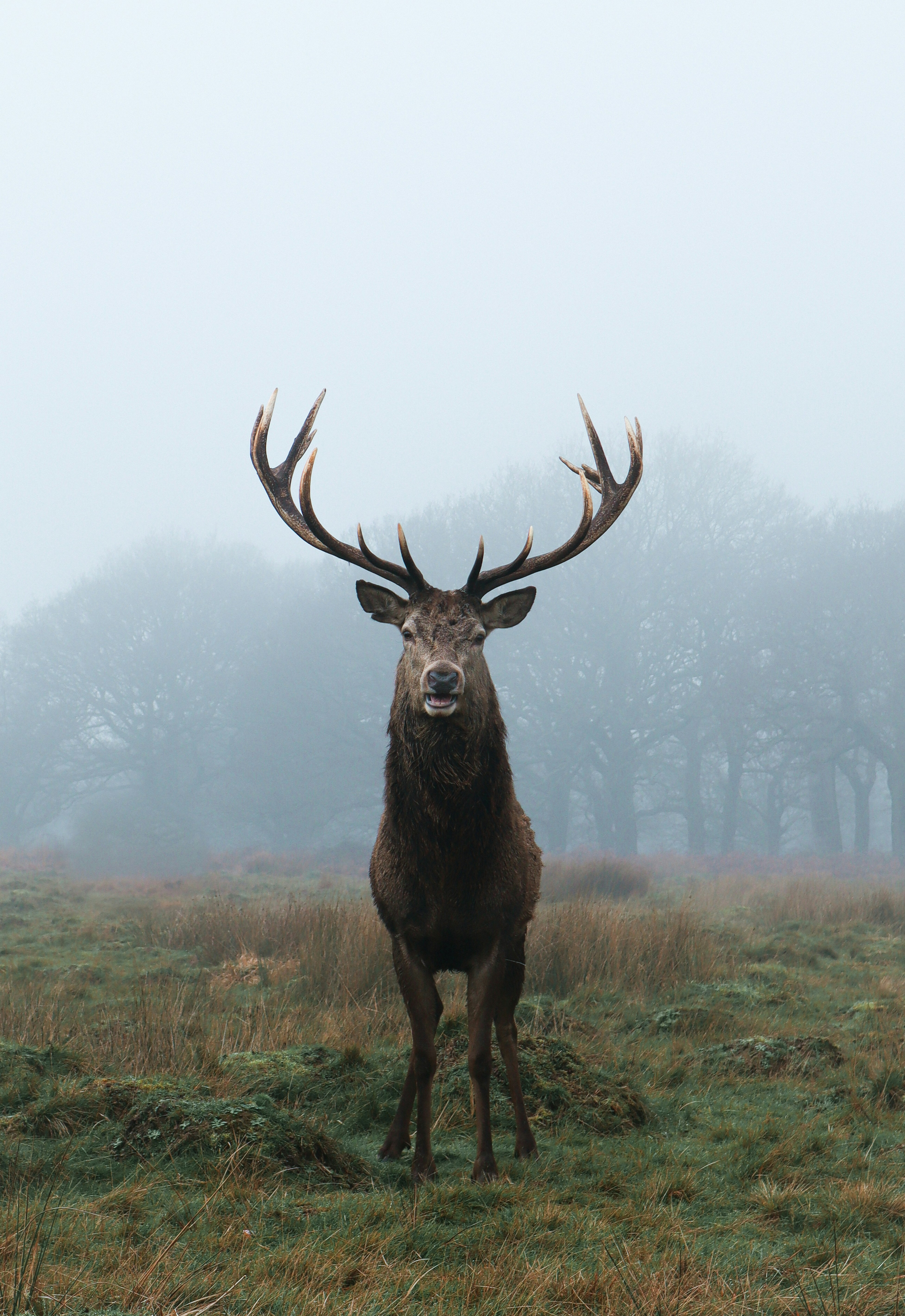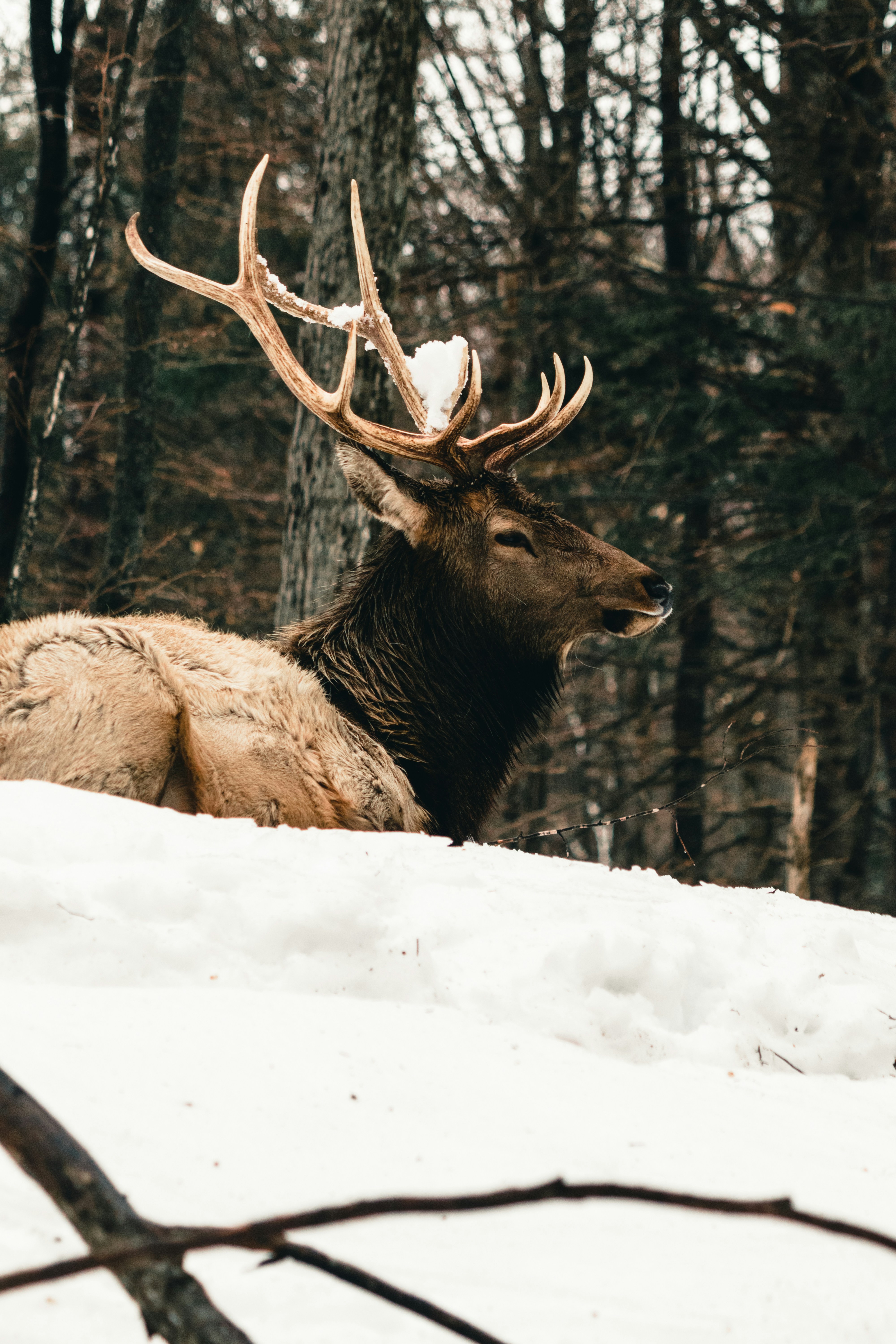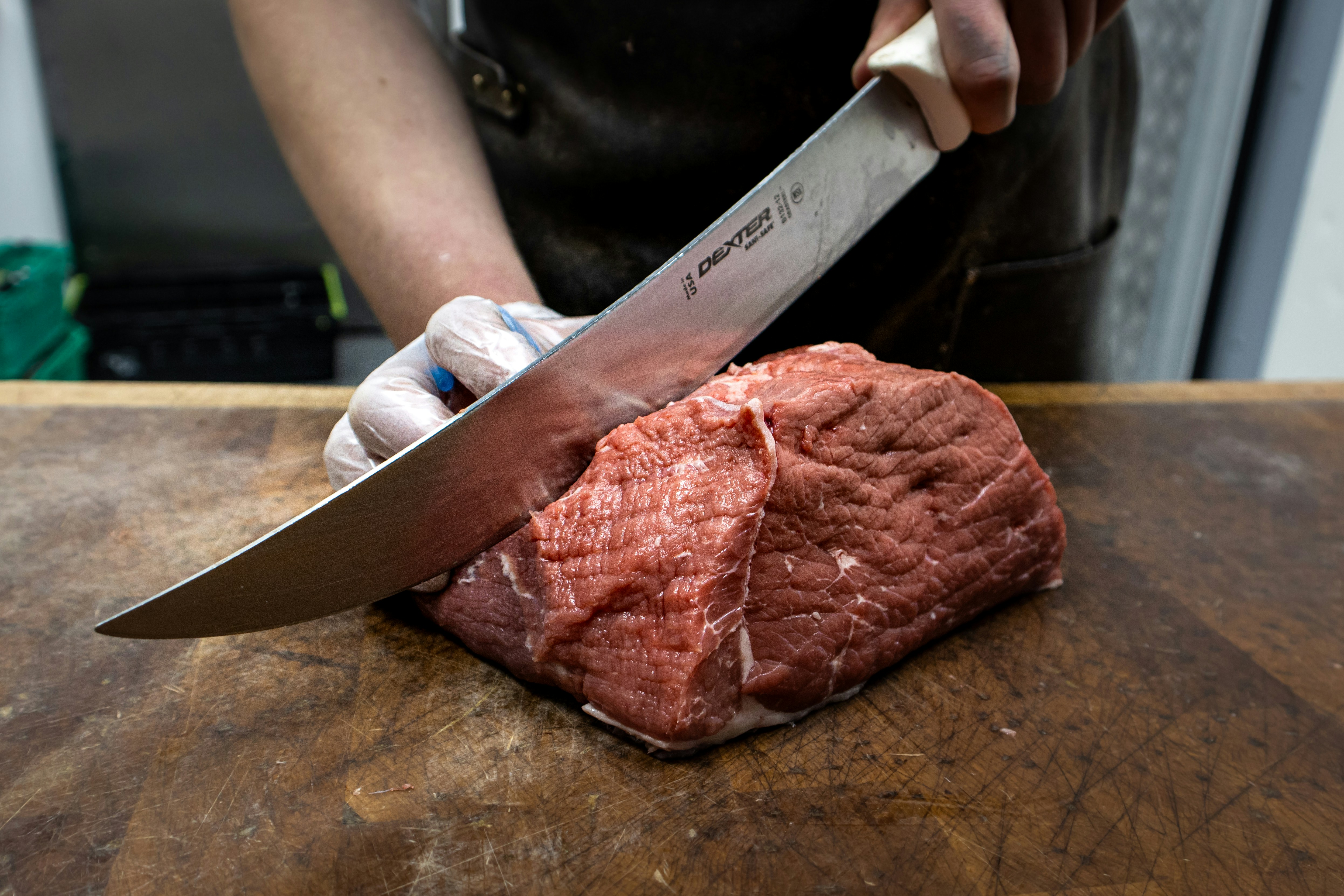
Only a select few will get their name drawn for an elk tag.
Everything a First-Time Hunter Needs to Know to Make the Most of a Once-in-a-Lifetime Opportunity
If you're reading this with a Michigan elk tag in your pocket, you just hit the Michigan elk hunting lottery. Every year, more than 60,000 hopefuls apply for just over 500 permits. So first, congratulations. Now the hard part begins.
Because Michigan's elk hunt is rare - often once in a lifetime - there's no margin for guesswork. Whether you're a seasoned hunter or this is your first big game tag beyond whitetails, this guide will walk you through the entire process, from scouting to shot, recovery to meat care.
In This Guide:
- Understanding the Hunt
- Start Scouting the Moment Your Name is Drawn
- DIY or Go with a Guide?
- Gearing Up for a Close-Quarters Giant
- The Right Strategy for the Right Season
- The Work Isn't Over: Tagging, Reporting, and Recovery
- The Real Work Begins: Field Dressing Your Elk
- The Final Reward: Caring for Your Elk Meat
- Final Thoughts
Understanding the Hunt
Michigan's elk season is split into three windows:
- Early (late August to early September)
- Mid (October)
- Late (December)
Most successful applicants are drawn for antlerless tags, with bulls reserved for a small number of lucky hunters or Pure Michigan Hunt winners.
The elk range is primarily in the Pigeon River Country State Forest and surrounding lands, a landscape of tangled swamps, silent hardwoods, and pine plantations that can swallow sound - and hunters. Your tag will list a specific hunt period and unit. Make sure you understand where you can legally hunt - use public land maps, GPS apps like OnX or HuntWise, and call the local DNR biologist if needed.

Start Scouting the Moment Your Name is Drawn
A Michigan elk tag isn't a license to just show up and hunt; it's an invitation to do your homework. The elk here move like ghosts and don't always bugle like their Rocky Mountain cousins. Your success hinges on pre-hunt scouting, and the right strategy depends entirely on your season.
For Early & Mid-Season Hunts (Aug-Oct): The Green-Season Game
If your tag is for the August/September or October hunt, your work begins in July. You're trying to pattern elk before winter alters their behavior. Start by glassing secluded meadows and old clear-cuts at first and last light. Hike ridge trails looking for fresh sign: tracks the size of your palm, piles of scat, and trees scarred by fresh rubs. Focus your efforts near thick timber that provides secure bedding cover.
For the Late Season Hunt (Dec): The Snow Advantage
December hunters have one powerful advantage: snow. The game is no longer about finding a pattern, but about finding the herd. Elk will be bunched up and focused on accessible food sources. The strategy is simple, but demanding: find the freshest set of tracks and follow them cautiously. You'll cover miles, but the reward could be finding an entire herd feeding in a clear-cut.

Slow stalking hunters can follow a set of tracks and slowly follow them until an elk is seen.
No Boots on the Ground? Here's Your Battle Plan
Putting your own boots on the ground is the gold standard for scouting, but for many hunters, life, work, or distance gets in the way. Don't panic. A significant disadvantage can be overcome with smart research. If you can't be there in person, your homework starts at home.
- Call the DNR Elk Biologist: A respectful, well-timed phone call to the local DNR staff is invaluable. Don't ask for a secret spot. Instead, show them you've done some research and ask about general herd movements or habitat types.
- Become a Digital Woodsman: Modern GPS apps like OnX Hunt or HuntWise are your virtual boots on the ground. Spend hours poring over your unit, marking edges, hidden openings, and potential funnels far from roads.
- Tap into the Local Grapevine: When in the area, stop and talk to people at sporting goods stores, taxidermists, and meat processors. They hear the daily chatter and know which general areas have been productive. My family would spend weeks at a cabin in Vanderbilt, Michigan - near the intersection of Old Vanderbilt Road and the Pigeon River. Our daily travels through the forest allowed us to track small herds as they passed through. If a hunter had a tag and asked me, I surely would have given them a pretty good idea where to start!
DIY or Go with a Guide?
Now that you understand the scouting commitment, you can make your first big strategic decision. You are not required to hire a guide in Michigan, but for a once-in-a-lifetime hunt, it might be the smartest money you spend.
A good guide handles the immense workload for you: months of scouting, setting up and taking down blinds, and knowing exactly how and when to use a call to talk a wary bull into range. Perhaps most importantly, they handle the game recovery. A mature Michigan bull can weigh over 800 pounds, and a guide will have the equipment and experience to get your animal out of the woods efficiently. Guide prices typically range from $1,500 - $3,000, and given the odds of drawing, many hunters find the increased chance of success well worth the investment.
That said, a successful DIY elk hunt - if you've done your homework - is one of the most rewarding experiences in the hunting world. The key is to have a solid plan for every step, especially recovery. While the state allows limited use of ORVs or tractors to retrieve an elk, you must have a plan in place *before* you hunt. Don't be afraid to hunt the managed openings and food plots within the Pigeon River Country State Forest; they were created for elk, and the elk use them.
Gearing Up for a Close-Quarters Giant
Forget the thousand-yard shots of the open West. Michigan's elk live in a world of tangled timber and tight windows, where most shots happen between 50 and 200 yards. This isn't a game of ballistics; it's a test of ethical, knockdown power.
Before you grab your trusted deer rifle, pause to consider the cartridge. While many Michigan deer hunters use capable calibers, some popular choices for whitetails are underpowered for a 600-pound elk. Classic woods cartridges like the .30-30 Winchester, fast varmint-class rounds like the .243 Winchester, and the straight-walled .350 Legend should be left at home.
You need a proven performer. This is the domain of reliable cartridges like the .30-06 Springfield, .308 Winchester, or 7mm Remington Magnum. If you want an extra margin of authority, the .300 Winchester Magnum is never a bad choice. More important than the caliber, however, is the bullet. Elk are notoriously tough, and you need a premium, bonded or monolithic bullet (like a Nosler Partition or Barnes TTSX) that will hold together and penetrate deep.
Top your rifle with a quality scope in the versatile 3-9x range, and practice shooting from a set of shooting sticks - you'll rarely find a perfect natural rest. And in that disorienting timber, a GPS or map app isn't a luxury; it's a lifeline. Finally, remember that blaze orange isn't just a good idea during firearm seasons - it's the law.
💡 Pro Tip
Michigan elk hunting laws are very specific. Be sure to read the DNR's Elk Hunting Regulation Summary before you head to the woods!
The Right Strategy for the Right Season
So, you know where to hunt and what to bring. The big question left is *how* you should actually hunt this thing. The answer depends entirely on that date printed on your tag, because a Michigan elk hunt in August is a completely different world from one in December. Let's break down the playbook.
If you're hunting the Early Season in August or September, think of it less like a chase and more like setting the perfect trap. The elk are still on their predictable summer patterns, and your job is to figure out their daily commute between bedding and food. Your mission is to be waiting for them in silence at a food source or hidden wallow.
If you drew an October tag, the rules change. This is the rut, but Michigan bulls are reserved. Be mobile, glassing from a distance. If you call, use soft, lonely cow mews to spark a bull's curiosity, not challenge him to a fight.
And then there's the Late Season in December. Your massive advantage is snow. The elk are now bunched up in survival-minded herds. The strategy is beautifully simple, though not easy: find the freshest set of tracks you can, and then begin the classic still-hunt, slow and methodical, until you find the elk at the end of them.
All the scouting and planning leads to a single moment. An elk is in front of you, and your heart is trying to beat its way out of your chest. This is where patience becomes your most important piece of gear. A rushed or poorly chosen shot can lead to a wounded animal and a heartbreaking tracking job.
The shot you dream of is the classic broadside. Aim for the vital zone - a basketball-sized area in the crease right behind the front shoulder. Following the back of the front leg up about a third of the way into the body centers your shot in the engine room. An even more common shot is the quartering-away angle. The mantra here is "aim for the off-side shoulder." Visualize the bullet's path entering behind the near-side ribs and driving diagonally forward through the chest.
Knowing when *not* to shoot is the mark of an ethical hunter. Let the animal turn on low-percentage shots like the quartering-to or straight-on shoulder shot, where heavy bone armors the vitals. Your respect for the animal is proven in these few critical seconds.

Shooting sticks are a great way to steady your rifle when a tree limb isn't an option.
The Work Isn't Over: Tagging, Reporting, and Recovery
When the shot breaks, your work is just beginning. Elk are incredibly tough and almost always run. Keep your eyes locked on the animal as long as possible and burn the "last seen" spot into your memory. Never assume you'll have an easy blood trail. On a multi-colored autumn forest floor, even a good trail can be surprisingly difficult to follow. Be patient, be persistent, and trust that your shot was true.
The moment you walk up to your animal is one of pure, unfiltered joy. But before you start the high-fives, before you relive the shot, and before you pull out the camera, you have one immediate and non-negotiable legal responsibility: you must tag your animal. Get it done first, then celebrate.
With your elk properly tagged, you are required to check it at a designated DNR station within 24 hours of recovery. This isn't just bureaucracy; the data you provide on age, health, and location is invaluable for monitoring the herd and setting future hunting quotas. By participating, you are directly contributing to the future of the very program that gave you this incredible opportunity.
The Real Work Begins: Field Dressing Your Elk
Your primary goal now is to cool the carcass down as quickly as possible. This means getting the heat-trapping organs out promptly. An elk is on an entirely different scale from a deer. A mature bull can tip the scales at 800 pounds, and even a cow will weigh 400 to 500 pounds.
Work methodically to open the body cavity and remove the organs, taking a moment to save the heart and liver if that's your thing. An elk's heart is a solid muscle weighing 4 to 5 pounds, while the liver can weigh an incredible 10 to 12 pounds. Once empty, prop the cavity open to cool.
Now comes the brute force part of the equation. Dragging a whole elk out of the woods by yourself is a fool's errand. This is a team-lift animal. Before you ever pull the trigger, have a recovery plan. Either have friends on standby, arrange help from a local with an ATV or tractor, or have the number of a guide who offers retrieval-only services. It is money well spent.

One elk will provide a year's worth of protein and enhance your dining room experience.
The Final Reward: Caring for Your Elk Meat
You've done it. The hunt is over, the work of recovery is done, and now you have a freezer full of what might be the best wild game meat on the planet.
If you're an early season hunter, your number one enemy is heat. Get the hide off immediately and get the quarters on ice. You should be on your way to a processor within 24 to 36 hours. If you're a late season hunter, use the cold as your friend. Let the meat hang in a cool, ventilated garage or barn for a day or two to become more tender before it freezes.
Prepare yourself, because you're getting a mountain of meat. Expect 150 to 250 pounds of boneless meat from a cow, and a large bull can yield up to 300 pounds. This is why you need a plan before you ever leave for the hunt. Have a processor chosen and, if you're processing it yourself, have plenty of freezer paper, sharp knives, and a full weekend cleared on your calendar.
Final Thoughts
This isn't just a hunt - it's a chapter in Michigan's conservation story. Elk were wiped out here by the late 1800s. Now, through careful management, we've got a thriving population - and you're part of it.
Take your time. Scout hard. Shoot straight. Respect the animal. Cooperate with the DNR's research. And when it's all over, share the meat and the memory.
You may never draw this tag again. Make it count.